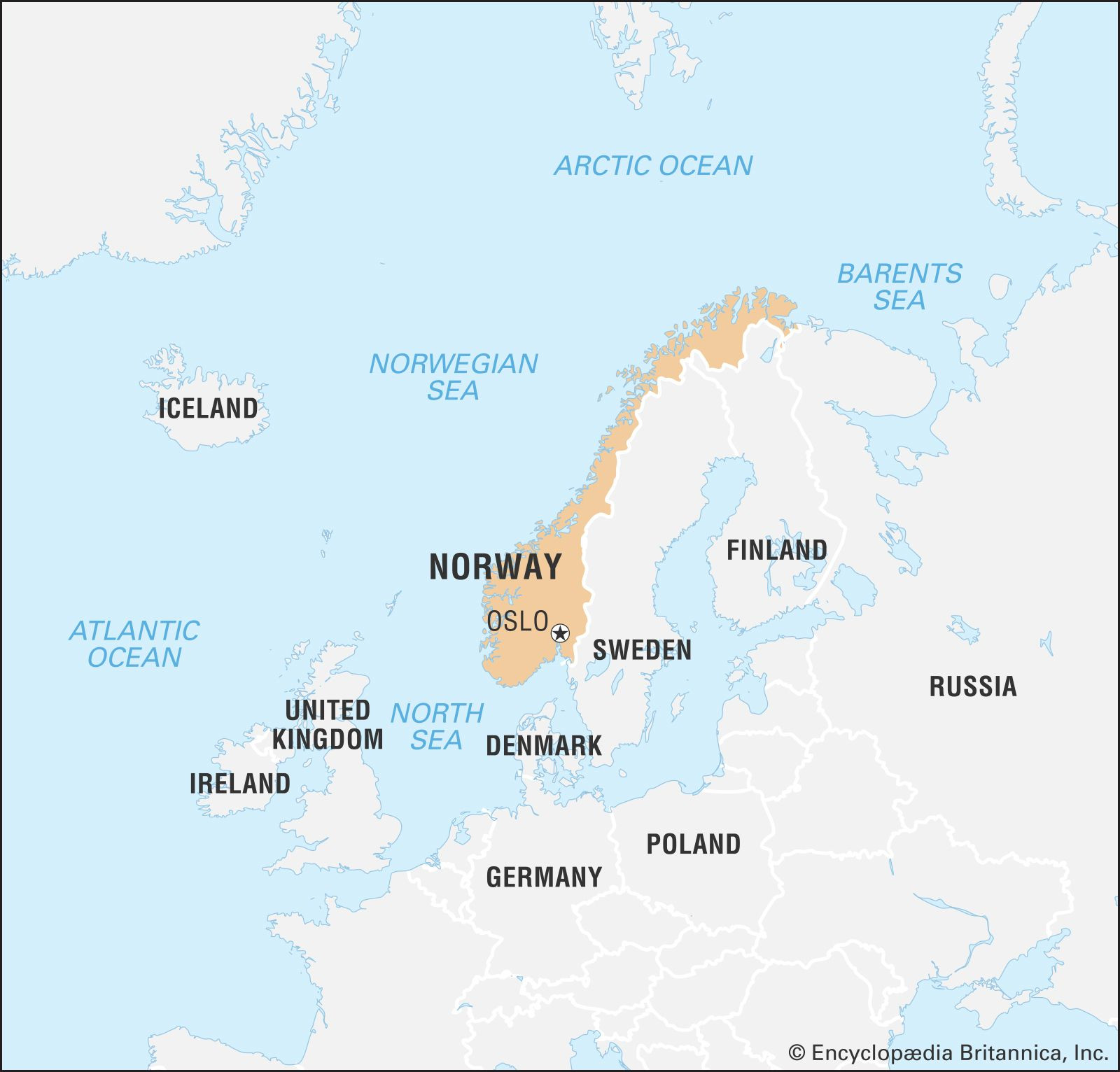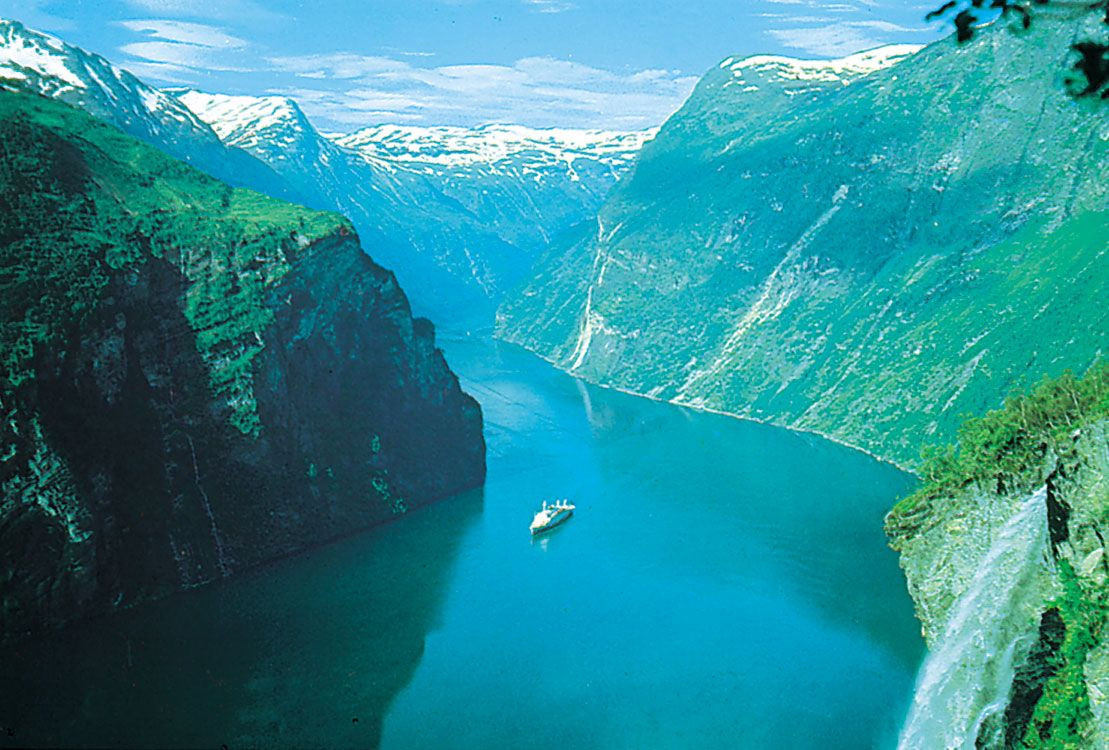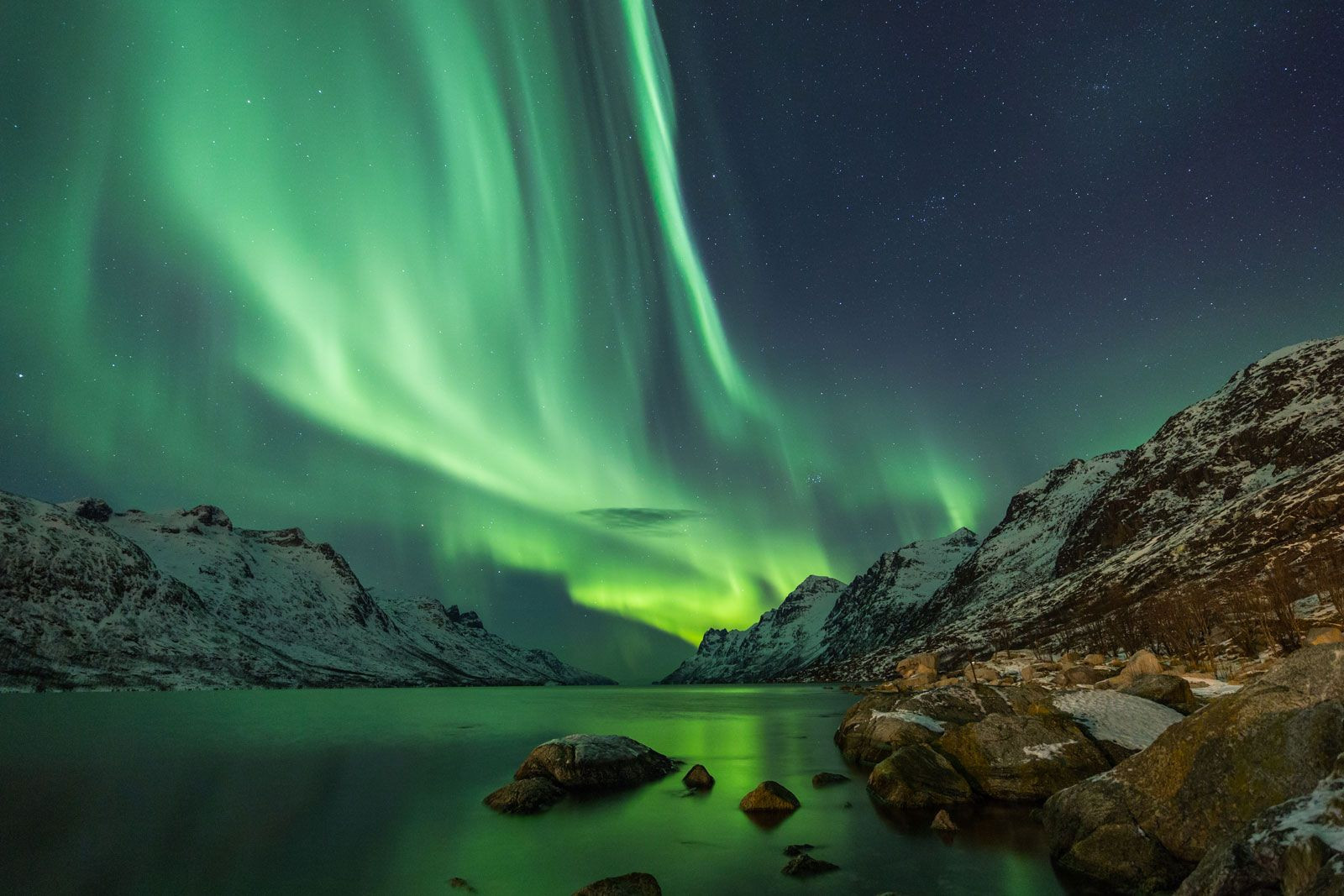Norway, officially the Kingdom of Norway, is a captivating country celebrated for its breathtaking fjords, the mesmerizing Northern Lights, and a rich Viking history. But Where Is Norway Country exactly? Nestled in Northern Europe, Norway occupies the western portion of the Scandinavian Peninsula. This prime location places it in a region renowned for its stunning natural beauty and high quality of life.
Location map of Norway in Europe, highlighting its position in Scandinavia and proximity to neighboring countries.
To pinpoint Norway’s location more precisely, it lies in the northern part of Europe. It shares land borders to the east with Sweden, Finland, and Russia, while its extensive coastline faces the Barents Sea to the north, the Norwegian Sea and the North Sea to the west, and the Skagerrak strait to the south. Oslo, the vibrant capital city, is situated in the southern part of the country, home to nearly half of Norway’s population. This southern concentration contrasts with the sparsely populated interior, characterized by mountainous terrain and extreme climates. Coastal cities like Bergen and Trondheim have historically thrived due to fishing and trade, shaping Norway’s strong maritime heritage.
World locator map showing Norway’s position on the globe, emphasizing its northern European location.
Norway’s geographic coordinates place it firmly within the Northern Hemisphere. Its mainland stretches from approximately 58°N to 71°N latitude and 5°E to 31°E longitude. This northerly location contributes to its unique environment, including long summer days and short winter days, especially in regions north of the Arctic Circle. The country’s position on the Scandinavian Peninsula has also historically influenced its cultural and political ties with other Nordic nations like Denmark and Sweden.
Norway’s Terrain and Natural Borders
The geography of Norway is dramatically defined by its mountainous landscape. About two-thirds of the country is mountainous, a feature resulting from its location on the Fennoscandian Shield, an area of ancient and hard bedrock. This rugged terrain has shaped settlement patterns, with populations largely concentrated along the coast and in valleys. Norway’s coastline is incredibly indented, sculpted by glacial fjords, deep inlets of the sea flanked by steep cliffs. Off the mainland coast, approximately 50,000 islands dot the waters, further illustrating the fragmented and maritime nature of the country.
Map detailing the physical features of Norway, highlighting mountain ranges, plateaus, and coastal regions.
Norway’s land boundaries to the east are primarily with Sweden, forming a significant part of the Scandinavian Peninsula. To the northeast, it shares borders with Finland and a smaller section with Russia. These eastern borders are largely defined by terrain and historical agreements. To the north, west, and south, Norway is bordered by seas and straits, providing natural maritime boundaries that have been crucial to its history and development as a seafaring nation.
Regional Divisions within Norway
While understanding where Norway country is on a global and continental scale is essential, exploring its internal regions provides a more detailed perspective. Traditionally, Norway is divided into four main regions: Northern Norway (Nord-Norge), Trøndelag, Western Norway (Vestlandet), and Eastern Norway (Østlandet). These regions are geographically distinct and have unique characteristics.
Northern Norway, or Nord-Norge, begins around the midpoint of the country and extends far into the Arctic. A significant portion of this region lies north of the Arctic Circle, experiencing the midnight sun in summer and polar nights in winter. The landscape is dominated by mountains, rugged peaks, and numerous islands.
Trøndelag is located in the central part of Norway, known for its agricultural lands and the historic city of Trondheim. This region acts as a transition zone between the southern and northern parts of the country.
Western Norway, or Vestlandet, is characterized by its dramatic fjords, steep mountains, and coastal islands. Cities like Bergen and Stavanger are major centers in this region, which is heavily influenced by the sea.
Eastern Norway, or Østlandet, encompasses the area around Oslo and extends inland. This region is generally less mountainous than Western Norway and includes broader valleys and more extensive forests. It is the most populous region of Norway and the center of government and industry.
A scenic fjord in western Norway, illustrating the iconic landscape feature and rugged coastline.
Why Norway’s Location Matters
Norway’s location is not merely a geographical fact; it’s a defining element that has shaped its history, culture, and economy. Its position in Northern Europe has influenced its climate, natural resources, and interactions with other nations. The long coastline and access to rich fishing grounds have fostered a strong maritime tradition, from the Viking Age to modern shipping and offshore industries.
Norway’s northerly latitude contributes to its unique natural phenomena, such as the Northern Lights (Aurora Borealis) and the Midnight Sun, attracting tourists from around the globe. The challenging terrain and climate have also fostered a resilient and resourceful population, known for their innovation and adaptation.
In conclusion, where is Norway country? Norway is located in Northern Europe, occupying the western Scandinavian Peninsula. Its geography is defined by mountains, fjords, and a long coastline. This unique location has profoundly shaped Norway’s identity and continues to influence its role on the world stage. From its Viking heritage to its modern advancements in technology and sustainability, Norway stands as a testament to the powerful interplay between location and national character.
The Northern Lights illuminating the sky in Norway, a natural phenomenon unique to its northerly location.


 Norway
Norway  fjord, western Norway
fjord, western Norway  northern lights, Norway
northern lights, Norway 